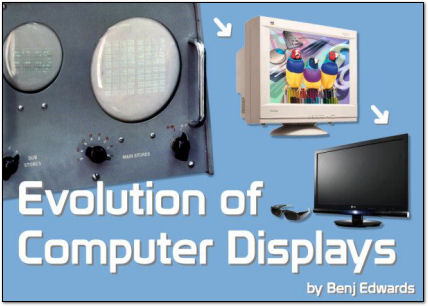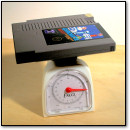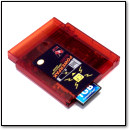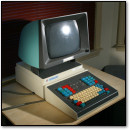The Evolution of Computer Displays
November 2nd, 2010 by Benj EdwardsPC World recently published “A Brief History of Computer Displays,” one of my most recent slideshow works and the latest in my “Evolution” series. The piece traces computer display devices from blinking lights, to paper tape, to terminals, and beyond.
Special thanks to Steve Wozniak and Lee Felsenstein for help with a certain segment of computer display history — the era when computers shifted from serial terminals IO to directly outputting a video signal. Our conversations were exciting stuff that I’ll explore further in future articles.
I hope you enjoy it. When you’re done reading, come back over and tell us what your first computer display/monitor was like.
—
Previous entries in Benj’s “Evolution of…” series:
The Evolution of Video Game Media
The Evolution of Removable Storage
The Evolution of The Cell Phone







November 3rd, 2010 at 12:07 pm
I suspect for many of us in the crowd old enough to have experienced a lot of this vintage stuff, it was our TV, of course! In the earliest days, we only had the one color TV in the living room (20 inches, more or less I think), so that was it, hooked up to the Atari 800. Later, we came into a smaller extra TV, which was set up permanently as the computer display on a desk.
My first monitor that wasn’t a TV was a pretty nice 14 inch EGA display, for the AT compatible (286) we bought (and on which I fell in love with Ultima V).
November 4th, 2010 at 2:49 am
My first screen was the family TV, one of those hulking wooden floor models with legs; we hooked the TI 99/4a to it; a few years later, we had Apple Color Composite & amber displays. The first non-RF monitors were a pair of nice 15″ SVGA screens for the parents’ 486 systems.
We also had an unmentioned laptop LCD type that was eventually called “Passive Matrix” after today’s Active Matrix superseded it. PM screens were weakly-back-lit, almost impossible to see in direct light, responded slowly enough to leave long trails after the mouse cursor. Ours was on a fancy Toshiba, so it definitely wasn’t low-quality for a Passive Matrix, but it was still the worst screen I’ve ever had to use.